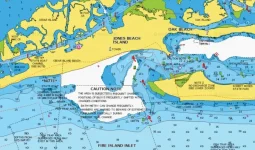The Western Run: Hunting Stripers and Blues from Rockaway Beach to Moriches Inlet
By: A Die-Hard Surf AnglerWritten from the cab of a Ford F-250, October 2024

The Gritty Truth: Life on the Western Run
It's 3:47 AM and I'm writing this by the dome light of my truck, parked behind the dunes at Democrat Point. The coffee's gone cold in my thermos, my waders are still wet from the last session, and there's sand in places sand shouldn't be. But I wouldn't trade this lifestyle for anything – because right now, we're living through what might be the best fall run on Long Island's western beaches in over a decade.For those of you who think surf fishing is a weekend hobby, let me set you straight. Real surf fishing – the kind that puts trophy stripers and monster blues on the beach – requires commitment that borders on obsession. I've been sleeping in this truck for the past three weeks, following the bait from Rockaway to Moriches, and I'm here to tell you exactly how to cash in on this incredible western run that's happening right now.
The stretch from Rockaway Beach to Moriches Inlet represents some of the most productive and accessible surf fishing on the entire East Coast. These 60-plus miles of beach offer everything from urban jetty fishing to pristine wilderness surf, all connected by barrier island roads that your 4WD can handle. But success here isn't just about having the right truck or the latest gear – it's about understanding the subtle differences between each section of beach and knowing exactly when and where to be.
Current Fall 2024 Conditions: Sand Eels Rule Everything
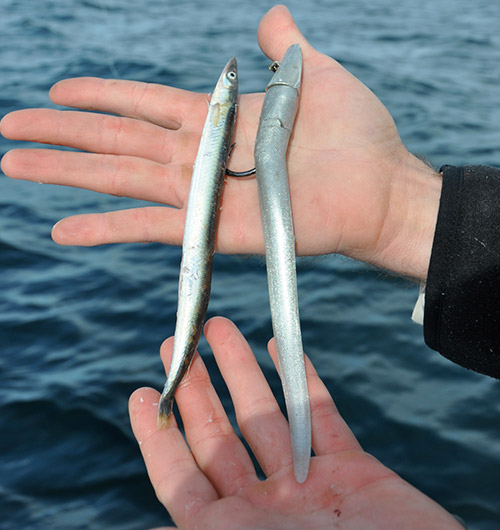
Let me break down what's happening right now, because conditions like this don't come around every year. We're seeing massive concentrations of large sand eels from 4 to 6 inches long holding in the wash all along the western beaches. These aren't the pencil-thin juveniles we usually see – these are fat, mature eels that are driving both stripers and blues absolutely crazy.
Current Bait Pattern Intelligence (October 2024):
• Sand eels: Thick concentrations, 4-6 inches, silver with dark backs
• Spearing: Scattered pods, mainly in back bays and near inlets
• Peanut bunker: Limited schools, mostly 15+ miles offshore
• Bay anchovies: Good numbers in protected waters
• Mullet: Sporadic, but large individuals when present
The sand eel bite has been so consistent that I've been catching fish on the same 3/4-ounce Deadly Dick in chrome for the past two weeks. But here's the kicker – you need to match the profile perfectly. These eels are fat and substantial, not skinny like the spring schools. I'm using 5-inch Slug-Gos in pearl and throwing 1-ounce Hopkins in hammered chrome to match the hatch.
Water temperatures are sitting pretty at 62-65°F along most of the western beaches, which is absolutely perfect for both species. The bass are aggressive and feeding heavily, putting on weight for their southern migration, while the blues are in full feeding mode with their typical fall ferocity.
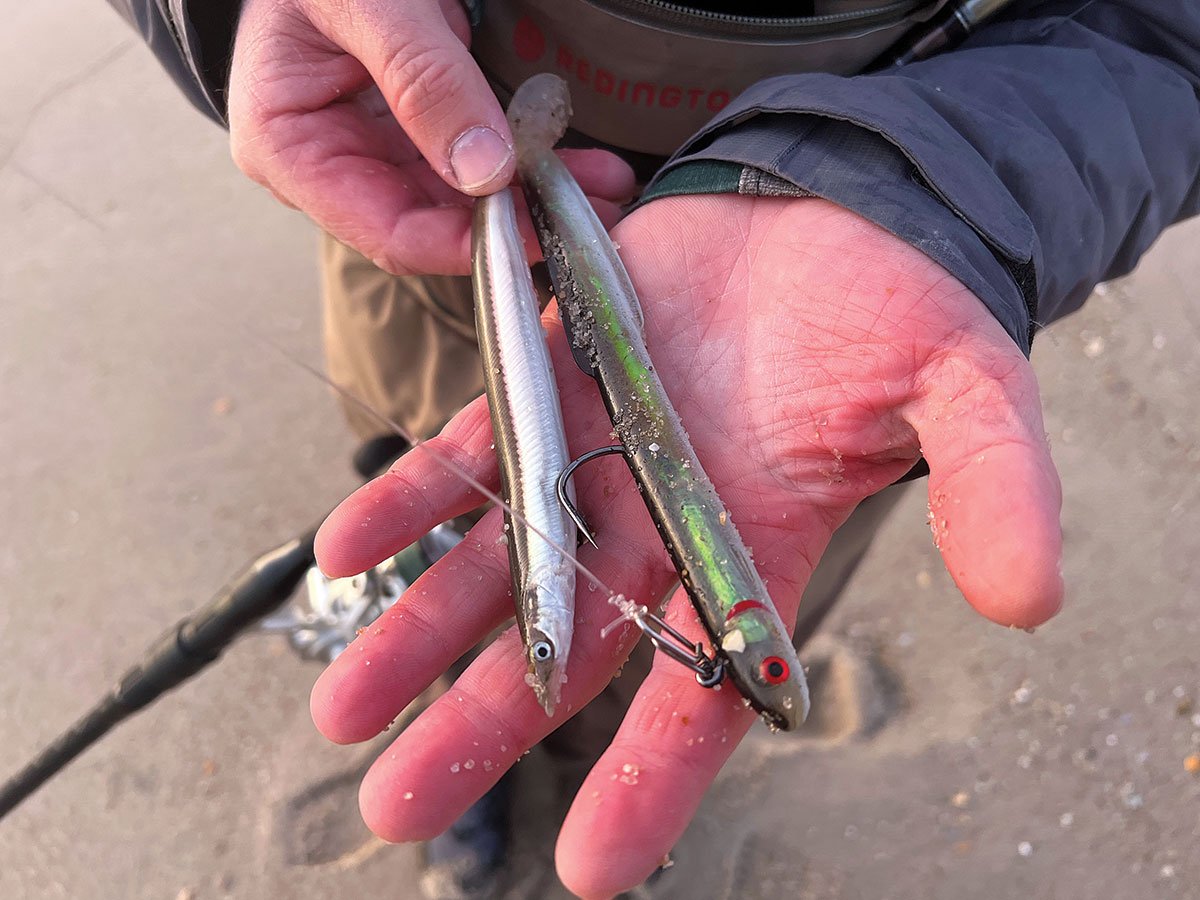
Reading Water and Structure: Rockaway to Moriches Breakdown
Every mile of this western run has its own personality, and understanding these subtle differences is what separates the weekend warriors from the guys who consistently put fish on the beach. Let me take you through each section and tell you exactly what to look for.Rockaway Beach and Breezy Point (40°34'N, 73°55'W)

Starting at the western end, Rockaway gives you urban convenience with surprising fishing quality. The jetties at Breezy Point create serious current and structure that holds bait and predators. The key here is understanding the subway schedule – seriously. Peak commuter times mean less fishing pressure, and I've found my best action between 10 PM and 5 AM when the beach belongs to the anglers.
Rockaway Hot Spots:
• Breezy Point Jetty: 40°33'42"N, 73°54'18"W
• Beach 17th Street: 40°34'30"N, 73°46'12"W
• Riis Park Beach: 40°33'54"N, 73°55'30"W
The bottom composition changes dramatically as you move east. Near the inlet, you're dealing with rocks, rubble, and serious current. Fish the incoming tide hard, positioning yourself to cast into the current seams where bait gets trapped. As you move toward the Riis Park area, the bottom transitions to sand with scattered mussel beds – perfect ambush points for stripers.
Nassau County Beaches: Jones Beach Complex
Jones Beach State Park represents some of the most consistent surf fishing in the entire region, but it requires that 4WD beach access permit to really capitalize on the best spots. The beach face here is classic barrier island surf – wide, sandy, with a well-defined bar system that creates perfect feeding zones.Jones Beach Premium Spots:
• Field 10 Beach Access: 40°35'48"N, 73°30'24"W
• West End 2 (4WD Area): 40°36'12"N, 73°31'48"W
• Central Mall East: 40°35'30"N, 73°29'06"W
The magic at Jones happens in that 100-200 yard zone where the outer bar drops into the deeper trough. This is where sand eels get disoriented by the current and become easy targets. I position my truck at the high tide line and wade out to knee-deep water, casting parallel to the beach to work that outer edge systematically.
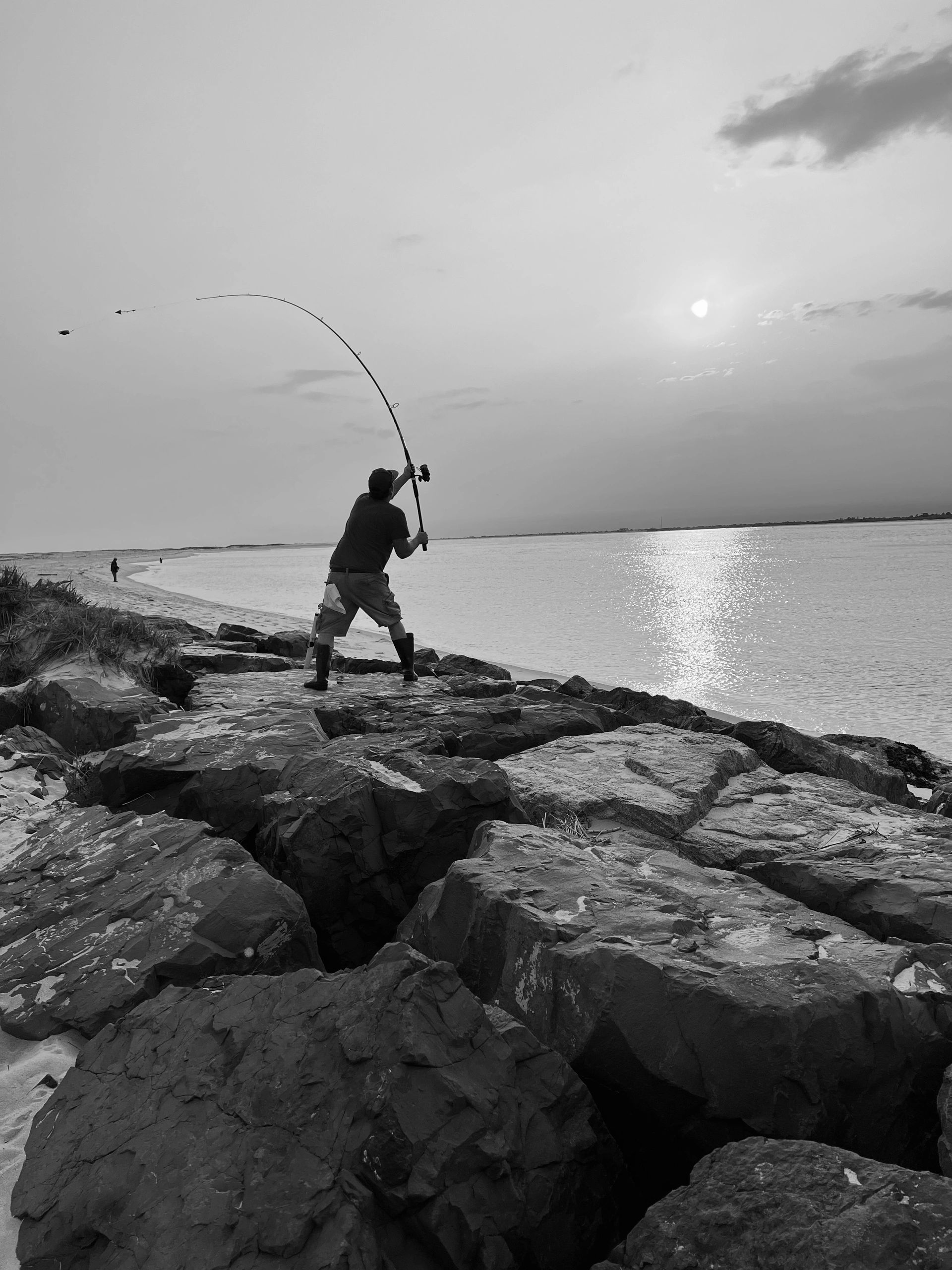
Fire Island Inlet: The Western Gateway
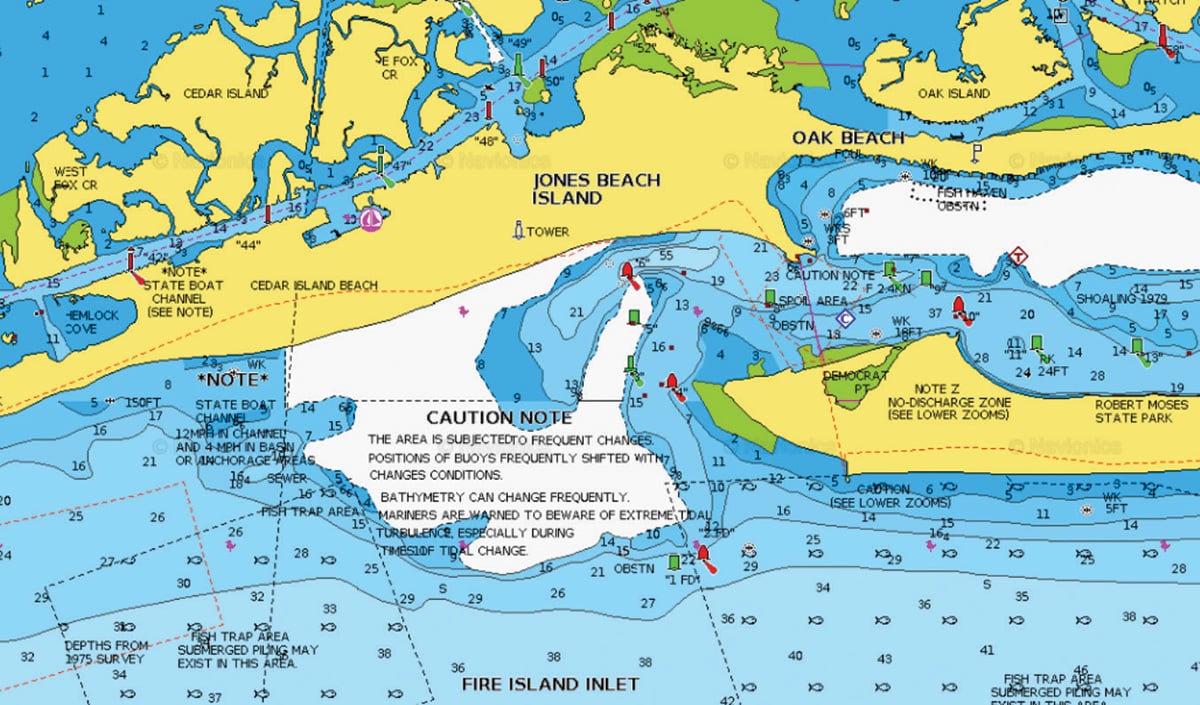
Fire Island Inlet is where things get serious. The combination of inlet current, jetty structure, and deep water access creates one of the most productive fishing environments on Long Island. But it's also one of the most challenging – this isn't a place for beginners or anyone not completely confident in their surf fishing abilities.
Fire Island Inlet Structure:
• West Jetty Tip: 40°37'18"N, 73°16'42"W
• Captree Inlet Channel: 40°38'24"N, 73°17'12"W
• West Bar (Wading): 40°37'06"N, 73°16'18"W
The west bar at Fire Island has been absolutely on fire this fall. The combination of inlet flow and ocean current creates a washing machine effect that concentrates bait and drives feeding fish into a frenzy. I fish this area exclusively on the incoming tide, positioning myself on the bar and casting into the deeper channel. Use heavy gear – 2-4 ounce lures – because the current is relentless.
Suffolk County: Robert Moses to Moriches
The eastern section of our western run offers the most diverse fishing opportunities. Robert Moses State Park provides 4WD access to miles of pristine beach, while the approach to Moriches Inlet brings back the structure and current dynamics that make inlet fishing so productive.Eastern Section Key Areas:
• Robert Moses Field 5: 40°37'42"N, 73°12'36"W
• Smith Point County Park: 40°44'18"N, 72°52'24"W
• Moriches Inlet East Jetty: 40°45'36"N, 72°45'48"W
Between Robert Moses and Smith Point, you're dealing with classic barrier island surf fishing. The beach is wide, the bars are well-defined, and during this fall run, the fish are everywhere. I focus on the troughs behind the outer bars, especially during the last two hours of incoming tide when bait gets pushed up against the beach.
4WD Beach Access and Truck-Based Operations
Living out of your truck during a fall run isn't just about having a place to sleep – it's about having a mobile command center that can respond instantly to changing conditions. My 2019 F-250 with the 6.7L Power Stroke has been home for three weeks now, and every modification serves a purpose.Essential Truck Setup for Extended Beach Operations:
• Compressor and tire gauge for beach air-down (20-22 PSI for sand)
• Auxiliary battery system for electronics and lights
• Weatherproof storage for tackle and gear
• Insulated coolers for bait and fish storage
• Rod holders mounted to bed rails
• Recovery gear: tow straps, sand ladders, shovel
• Weather radio and marine VHF for conditions
• Portable fish cleaning station
The New York State 4WD beach access permit costs $125 for the season and opens up miles of beach that walk-on anglers simply can't reach effectively. But getting the permit is just the beginning – you need to understand beach driving fundamentals or you'll end up buried in soft sand at 2 AM with fish feeding all around you.
Rule number one: air down to 20-22 PSI before hitting the sand. I run BFGoodrich All-Terrain T/A KO2s in 275/70R18, and proper tire pressure is more important than four-wheel drive for most beach conditions. Rule number two: momentum is your friend, but excessive speed will get you stuck faster than anything. I maintain steady forward progress and avoid sudden steering inputs.
Current 4WD Access Status (October 2024):
• Robert Moses State Park: Full access, permits required
• Jones Beach West End: Open, limited hours during peak
• Smith Point County Park: 24-hour access with permit
• Moriches Inlet: Day use only, no overnight parking
Tide and Solunar Timing: The Next 14 Days
Timing is everything in surf fishing, and understanding how tides, moon phases, and solunar periods interact can mean the difference between a skunk and a career night. Based on current conditions and the next two weeks of tidal action, here's exactly when you want to be on the beach.Optimal Fishing Windows - October 15-29, 2024:
Prime Dates: October 17-19 (New Moon), October 24-26 (First Quarter)
Peak Tides: High tide arrivals between 5-7 PM and 3-5 AM
Solunar Major: 6:15-8:15 AM and 6:45-8:45 PM daily
Weather Window: Northwest winds 10-15 mph through October 20
The new moon period from October 17-19 coincides perfectly with prime feeding tides and moderate weather conditions. This is when I'm planning to spend 72 straight hours on the beach, moving between spots based on tide timing and bait activity. High tides arriving during twilight hours have been producing the most consistent action, especially when they align with major solunar periods.
For the western run, I time my fishing sessions to hit peak locations during optimal tide stages. Fire Island Inlet fishes best on the incoming tide, starting about two hours before high water. Jones Beach produces during the last hour of incoming and first hour of outgoing. The eastern beaches from Robert Moses to Moriches work best during mid-incoming to high tide.
Equipment and Techniques for Each Location
Gear selection varies dramatically between the different sections of the western run. What works perfectly at Rockaway will get you destroyed at Fire Island Inlet. Here's my location-specific approach that's been producing consistent results this fall.Rockaway Beach Setup:
• Rod: 10' medium-heavy spinning, fast action
• Reel: 4500-5000 series, sealed drag
• Line: 20lb braided main, 25lb fluoro leader
• Lures: 3/4-1 oz metals, 5" soft plastics
• Target: Jetty structure and current seams
At Rockaway, I'm dealing with moderate current and mixed structure. The 10-foot medium-heavy rod gives me enough backbone to handle strong fish while maintaining casting distance. I fish 3/4-ounce Deadly Dicks in chrome and white, matching the sand eel profile perfectly. The sealed drag reel is essential here because salt spray is constant near the jetties.
Fire Island Inlet Heavy Combat Setup:
• Rod: 11' heavy surf stick, moderate-fast action
• Reel: 6000+ series, minimum 25lb drag
• Line: 30lb braided main, 40lb fluoro shock leader
• Lures: 2-4 oz metals, large profile plugs
• Target: Inlet mouth, jetty tips, deep channels
Fire Island Inlet demands heavy artillery. The current is relentless, the fish are bigger, and you're often casting into howling wind. I step up to an 11-foot heavy rod that can handle 4-ounce lures comfortably. The shock leader is crucial because these inlet stripers hit like freight trains and there's no forgiveness in the rocky structure.
Open Beach Versatile Setup:
• Rod: 10'6" medium-heavy, fast action
• Reel: 5000 series with spare spool
• Line: 20lb braid, 20-30lb leader options
• Lures: 1-2 oz metals, swimmers, soft baits
• Target: Outer bars, troughs, rip lines
Safety and Night Fishing Considerations
Night fishing during the fall run produces the biggest fish, but it also presents the greatest risks. After three decades of surf fishing and more close calls than I care to remember, I've developed protocols that keep me safe while maximizing fishing time.First rule: never fish alone at night, especially around inlets and jetties. I fish with the same core group of guys who know my fishing style and can spot trouble before it becomes dangerous. We maintain constant communication using handheld radios, and everyone carries multiple light sources.
Night Safety Essential Gear:
• Primary headlamp (1000+ lumens) plus backup
• Waterproof handheld spotlight
• Marine VHF radio with weather alerts
• GPS device with marked waypoints
• Emergency whistle and signaling devices
• First aid kit in waterproof container
• Emergency blanket and fire starting materials
Weather monitoring becomes critical during night sessions. Conditions can change rapidly, and being caught in deteriorating weather while wading in surf is potentially fatal. I check marine forecasts every two hours and have hard limits: sustained winds over 25 mph, surf over 6 feet, or any storm warnings mean we're off the water immediately.
The rewards of night fishing during this fall run have been extraordinary. My biggest striper this season – a 42-inch, 28-pound cow – came at 11:30 PM during a major solunar period while fishing Fire Island Inlet on a dropping tide. The fish hit a 6-inch Slug-Go in pearl fished weightless in the wash, and the fight lasted twenty minutes in the current.
Final Thoughts: Making the Most of This Run
As I finish writing this, dawn is breaking over the Atlantic and I can see birds working about 200 yards off the beach. This fall run isn't going to last forever – nothing this good ever does. Water temperatures will drop, bait will move out, and the fish will follow.If you're serious about capitalizing on what might be the best western Long Island fall run in a generation, you need to commit fully. Half-measures won't cut it when fish are feeding this aggressively and conditions are this perfect. Get your 4WD permit, load up the truck, and prepare to live this lifestyle for the next few weeks.
The sand eels are thick, the fish are feeding, and the weather has been cooperative. These are the conditions we dream about during the slow summer months and the dead of winter. Right now, from Rockaway Beach to Moriches Inlet, everything is lining up perfectly for the surf fishing experience of a lifetime.
Time to grab the rods and get back out there. The tide's turning, and I can hear fish feeding in the wash.
Tight lines and safe fishing,
From somewhere along the western run

